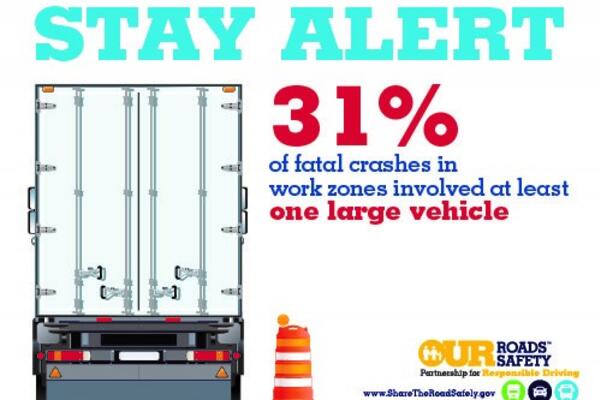This crazy weather continues this year and the heat is setting record temperatures across North America.
What are you doing to protect your employees from heat stroke and exhaustion?
These conditions are created when our body is unable to regulate our heat production at a safe level. First, we need to make all of our employees aware of the signs and symptoms for these conditions:
1. Fatigue, weakness, fainting
2. Nausea and vomiting
3. Headache
4. Dizziness
5. Muscle cramps
6. Irritability
7. Sweating (absence or presence)
8. Paleness
These conditions can be further escalated by the physical condition of your employees. Employees at a greater risk for heat exhaustion and heat stroke are those with: heart disease, skin diseases, extensive burns, endocrine disorders (hyperthyroidism, diabetes, etc.), high blood pressure, overweight, depression, insomnia and fever. Over the counter drugs can also contribute to a greater risk for these conditions.
ALL HEAT-RELATED ILLNESSES ARE PREVENTABLE!
What can you do to prevent them?
• Use common sense.
• Limit your exposure to direct sunlight as much as possible.
• Drink more fluids (non-alcoholic); do not drink fluids that contain caffeine or large amounts of sugar. Sport drinks are good, as they replace electrolytes and salt in your body. Avoid extremely cold fluids as these can cause stomach cramps. Drink often throughout the day 4-6 ounces at a time. WATER IS THE BEST!
• Wear lightweight, light colored, loose fitting clothing that does not create a safety hazard for your work environment. If outdoors, wear a hat to reduce direct exposure to the sun.
• Make sure your employees are wearing sunglasses that provide UV protection and are impact resistant.
• Avoid hot foods and heavy meals; they add heat to your body.
• Drivers who are on routes should pack a cooler with water for the day. Also keep an umbrella in the truck if you are operating in extreme conditions (desolate, desert, etc.), as this will allow you to move to an area with breeze and still be protected from the sun.
• If exposure to the sun is inevitable, apply generous amounts of sunscreen with a high SPF rating to exposed skin.
• Make sure your truck is in excellent condition. A good pre-trip inspection is crucial in extreme heat conditions to prevent breakdowns, otherwise you may find yourself and your unit on the side of the road exposed to the extreme heat.
Heat and Tires
A very famous tire engineer once stated, “Heat is to tires, as kryptonite is to Superman”…in other words, heat is detrimental to tires.
Taken all together, hot summer temperatures, under inflated tires, heavy loads, and traveling at high speeds= recipe for tire disaster. That is exactly why you see more alligators on the highway in the summer season. An under-inflated tire running during winter or spring months would cause heat buildup and dissipate into the atmosphere due to cold ambient temperatures. So when operating in temperatures in excess of 100 degrees Fahrenheit, the heat will increase significantly in an under-inflated tire.
When a tire is under-inflated or over-inflated, it loses stability, negatively affecting handling, cornering, and stopping, so proper air pressure is pertinent!
When a radial truck tire has been inflated to its proper air pressure, according to the weight it's carrying, the operating temperature should be around 150 degrees F. Let us assume that 100 PSI is the fleet standard. The rule of thumb is that for every loss in air pressure of 2 PSI, the tire temperature will increase by 5 degrees.
What can Fleets do to Minimize Tire Related Issues during the Summer Months?
• Tire pressure needs to be checked more frequently in the summer. Weekly is recommended.
• Review with drivers the proper tire inspection procedure during a pre-trip inspection.
• Do not rely on the looks of the tire or striking the tire to determine inflation pressure. The only accurate way to access the pressure in a tire is to use a tire gauge. Keep in mind just 2 psi deficit in pressure increases the heat by 5 degrees.
• Plan your tire program around mounting new, deep tread depth tires prior to the winter season. When summer hits, the tires will be worn down and generate less heat.
• Inspect tires for punctures and damage more frequently in the summer months. Tire punctures tend to increase during the summer because the tread rubber becomes hotter and “softer” and acts as a magnet to nails and road debris.
Bottom line: checking your tires on a regular basis for both air pressure and any signs of irregular wear is essential if a fleet wants to maximize mileage and increase fuel economy.
Beware- It's the Busiest Time of Year for Road Construction
Drivers should be especially cautious of construction zones this summer. States are making a concentrated effort to raise the awareness of the dangers in these zones. Here are some safety tips you can share with your drivers regarding construction zones:
• SLOW DOWN and be alert when approaching a “construction zone.” Get into the correct lane well in advance. Where traffic is merging into a single lane, be cautious of other motorists racing to get ahead of slowing traffic.
• Get OFF the phone…. even hands free/bluetooth phones are distracting your ability to safely operate your truck
• PAY ATTENTION to what those orange and black warning signs are telling you to do.
• BE ALERT for the actions of other drivers.
• PAY CLOSE ATTENTION to construction equipment and workers. You never know their next move, so be prepared to stop.
• WATCH SPEED LIMITS and don’t tailgate. Double your following distance. Rear-end collisions are the most common kind of construction zone accident.
• WATCH FOR CONSTRUCTION VEHICLES entering and exiting the road in or near the construction area, as they are probably to enter and exit at slower speeds than other traffic.
• TURN YOUR HEADLIGHTS ON as you approach a work-zone, alerting both the construction workers and other traffic around you of your presence.
• GIVE CONSTRUCTION WORKERS A BRAKE
Question of the Week
"I got a warning letter from the FMCSA regarding my CSA SMS scores…what do I do?"
A warning letter is your chance to improve your safety performance and compliance without further intervention from the Federal Motor Carrier Safety Administration (FMCSA). Read the letter carefully because it identifies your company’s specific safety performance and compliance problems based on Safety Measurement System (SMS) data, explains how to access your safety record, and outlines the consequences if your company’s safety performance and compliance do not improve.
What happens next?
You do not need to respond directly to the letter. FMCSA will continue to monitor your safety performance and compliance through its SMS at http://ai.fmcsa.dot.gov/sms/. It is also important for you, as a motor carrier, to regularly check your SMS data. If your safety performance and compliance do not improve, FMCSA may conduct additional interventions that could result in fines and/or suspension or revocation of your company’s operating authority. These interventions may include Offsite or Onsite Investigations
FMCSA PROPOSES TWO-YEAR DELAY TO PARTS OF DRIVER TRAINING RULE
Citing technical issues, the Federal Motor Carrier Safety Administration has proposed to delay implementation of certain portions of the Entry-Level Driver Training rule for an additional two years. 84 Fed. Reg. 34324 (July 18, 2019).
The proposed extension would only apply to: (1) the date for training providers to upload entry-level driver training certification information into the Training Provider Registry; and (2) for State Driver Licensing Agencies to receive driver-specific ELDT information. The implementation dates for these two provisions would be extended from February 7, 2020 to February 7, 2022.
The FMCSA notice states this proposal would allow the agency additional time to complete development of the electronic interface that will receive and store ELDT certification information from training providers and transmit that information to the SDLAs. The proposed extension would also provide SDLAs with sufficient time to modify their information technology systems and procedures, as necessary, to accommodate their receipt of driver specific ELDT data from the TPR.
The remainder of the rule, including the requirements for an entry-level CDL driver to complete classroom and behind the wheel training before taking the CDL exam, would go into effect as planned on February 7, 2020. Beginning February 7, 2020, training providers wishing to provide ELDT must be listed on the TPR and drivers seeking a CDL or endorsement on or after February 7, 2020, must complete the required training, as set forth in the ELDT final rule.
FMCSA proposal expands flexibility for CDL applicants
The Federal Motor Carrier Safety Administration (FMCSA) announced a proposed rule that would allow commercial driver's license (CDL) applicants to take general and specialized knowledge tests in a state other than the applicant's state of residence.
FMCSA said the proposed rule would reduce travel costs and time delays to obtain CDLs. The proposed changes are optional for the states - they will not be required to offer testing for out-of-state applicants. However, if a state elects to test an out-of-state CDL applicant, the applicant's state of residence would be required to accept the results.
Reducing regulatory challenges for CDL applicants has been a focus for FMCSA this calendar year.
In March, FMCSA authored a final rule streamlining the process and reducing costs to upgrade from a Class B to a Class A CDL. FMCSA said the rule will save eligible driver trainees and motor carriers $18 million annually.
In June, FMCSA published a deregulatory proposal to streamline and simplify the process by which states are currently required to conduct skill tests for individuals seeking to obtain a CDL.
The latest proposed rule will have a 60-day comment period upon publication in the Federal Register. Comments can be submitted through the federal eRulemaking portal at regulations.gov, under Docket No. FMCSA-2018-0332.










